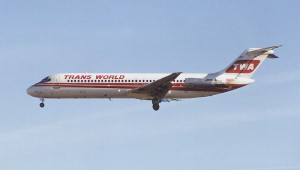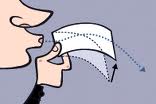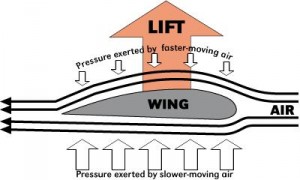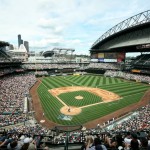Are you as much in awe of flight as I am? I remember my first flight and I’d like to share the story with you.
It was in January, 1970 on a TWA (the former Trans World Airlines) DC-9 from Cleveland, Ohio to Indianapolis, Indiana. It was a cold, sunny morning and I vividly recall how swiftly that little airplane rocketed down Runway 23L at Cleveland Hopkins International Airport. Moments later we were airborne and climbing high.
A ‘miracle’ of physics
Having spent a bit of time reading up on the concept of flight, I knew how and why that metal machine could lift off the ground and be carried into the sky. But it still felt like a ‘miracle’ to me. How can something that large – that heavy – defy gravity and take off? It’s really quite simple and you can demonstrate it yourself in an easy and fun experiment.

Let’s have some fun with the physics of flight!
In 1738 a Swiss mathematician, Daniel Bernoulli, published a book titled Hydrodynamica. In it Bernoulli stated that when a fluid (in this case, air) travels faster its pressure drops. You can see the result by conducting a simple experiment. Take a piece of paper and grasp it at one end, holding it up in front of your mouth. Allow the paper to curl downward under its own weight so that it is limp and sagging toward the ground. Then round your lips and blow steadily across the top of the piece of paper. You’ll see the paper rise up toward you and nearly straighten out!

Making that airplane fly!
In your experiment, you increased the speed of the air on top of the piece of paper while the air underneath it remained still. Because faster air has less pressure than air traveling at a slower speed, the pressure on top of the piece of paper was lessened to a point below the pressure of the air beneath it. The result was lift!
Airplane wings produce the same effect by having a curved top surface and a relatively flat bottom surface. As the aircraft moves forward into the air, the air stream must divide when it meets the front, or leading edge of the wing. Part of the air stream must travel over the top surface of the wing while the other portion must travel along the underside of the wing.

The curved top surface of the wing represents a greater distance front to back, or leading edge to trailing edge, than the straighter bottom surface. Therefore, the air stream traveling along the upper surface of the wing must travel farther than the air stream below the wing. As the air streams combine at the trailing edge of the wing, the portion above has had to travel faster to meet the air stream below. As a result, its pressure is lower than the pressure under the wing and the result is lift. The wing rises and the airplane achieves flight!
Flying High with Casual Games
Themes of flight are found in many areas of our lives; it doesn’t have to be limited to aviation. For example, have you taken a flight while playing casual games? Did you know that was even possible? Sure is! In Unsolved Mystery Club™ – Amelia Earhart™ you can not only follow the mystery of the famous lost aviator but you can learn to fly in a variety of mini-games. Maybe you’d rather pilot a fighter in the action games Platypus and Platypus II. Or try your skills at helicopter piloting in AirStrike 3D! No matter how you’d like to fly, GameHouse is ready for takeoff with our Airplane Games.
Connect with GameHouse
Don’t forget to stay in touch with us on our Facebook page or on Google+ and tell us about your favorite flight games. Have fun!




